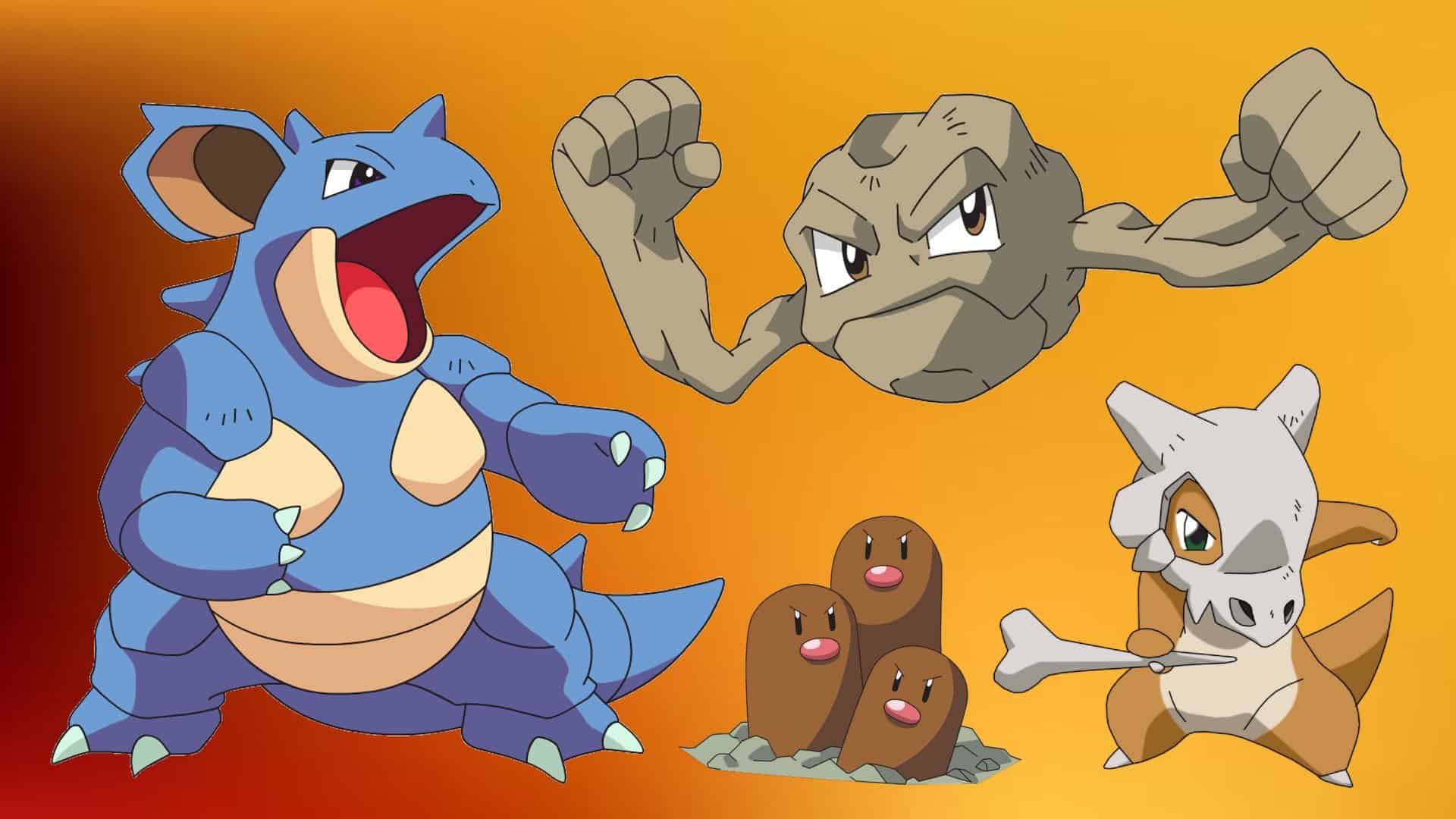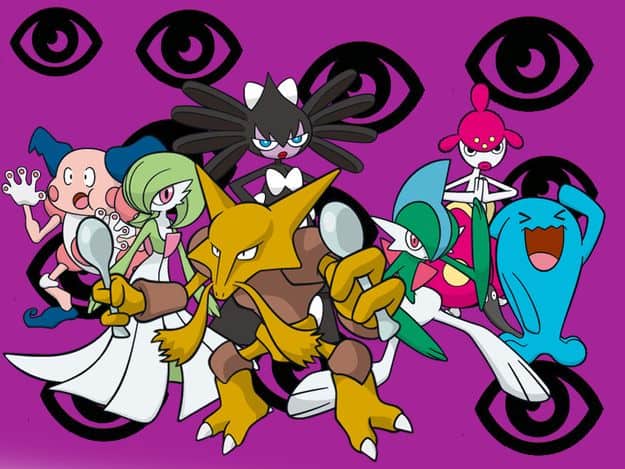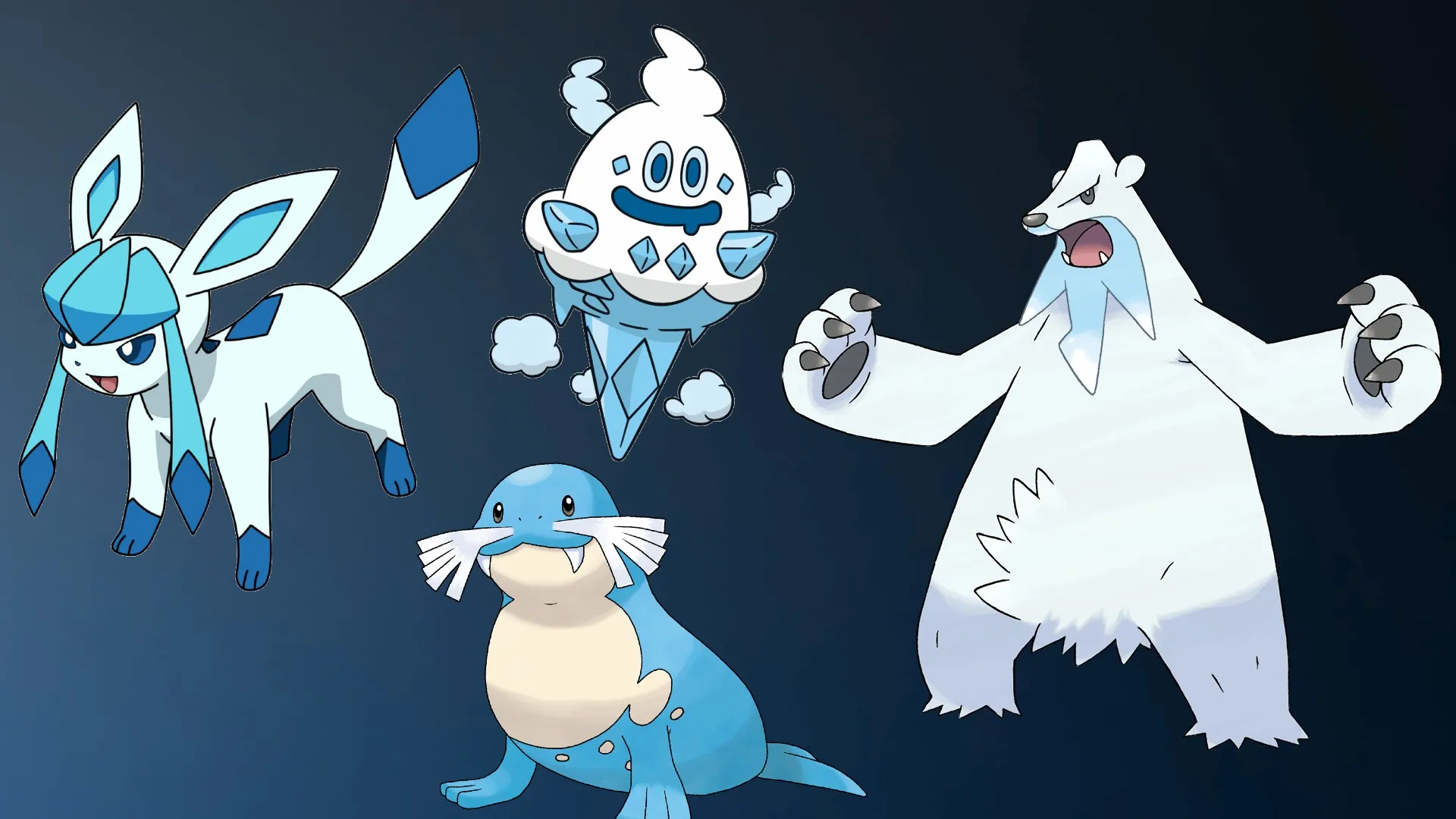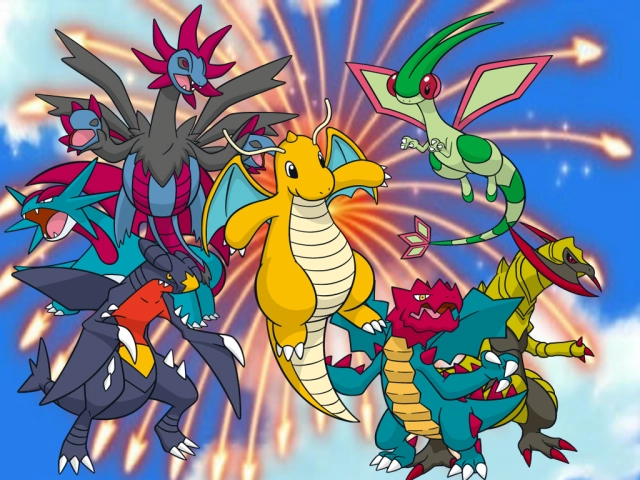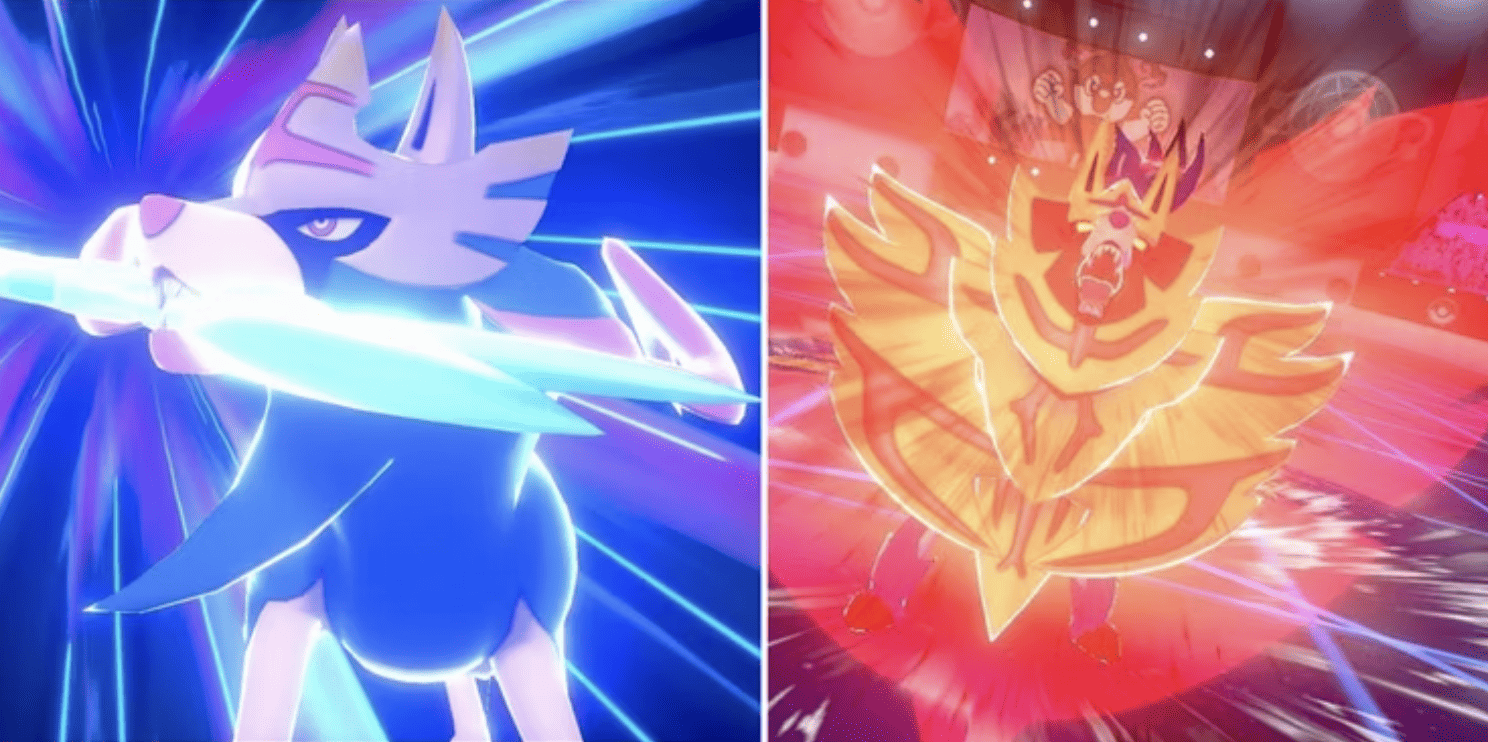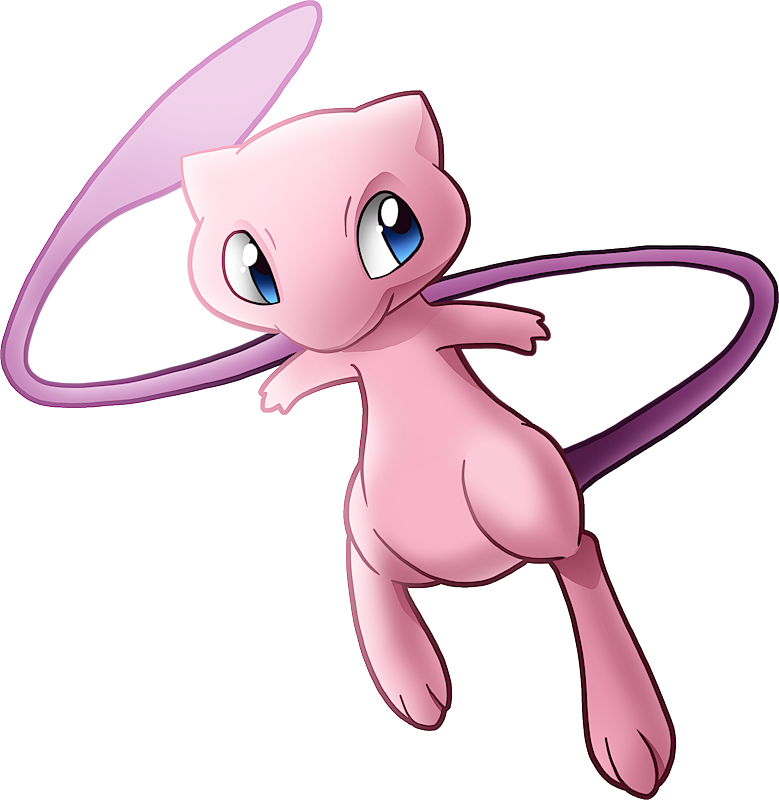Introduction
Embarking on a journey through the world of Pokémon Go, trainers are met with a complex ecosystem of Pokémon types, each with its unique strengths, weaknesses, and strategic nuances. Understanding the intricate type chart is essential for gaining the upper hand in battles, as it dictates the effectiveness of moves against opposing Pokémon.
With the advent of the Season of Adventures Abound and the Party Up! event, players are more eager than ever to master the art of type matchups to excel in the Go Battle League and Shadow Raids. The dynamic of Pokémon types in Pokémon Go, while mirroring the main series games, presents slight variations in effectiveness multipliers, adding a layer of depth to the gameplay experience for both veterans and newcomers alike.
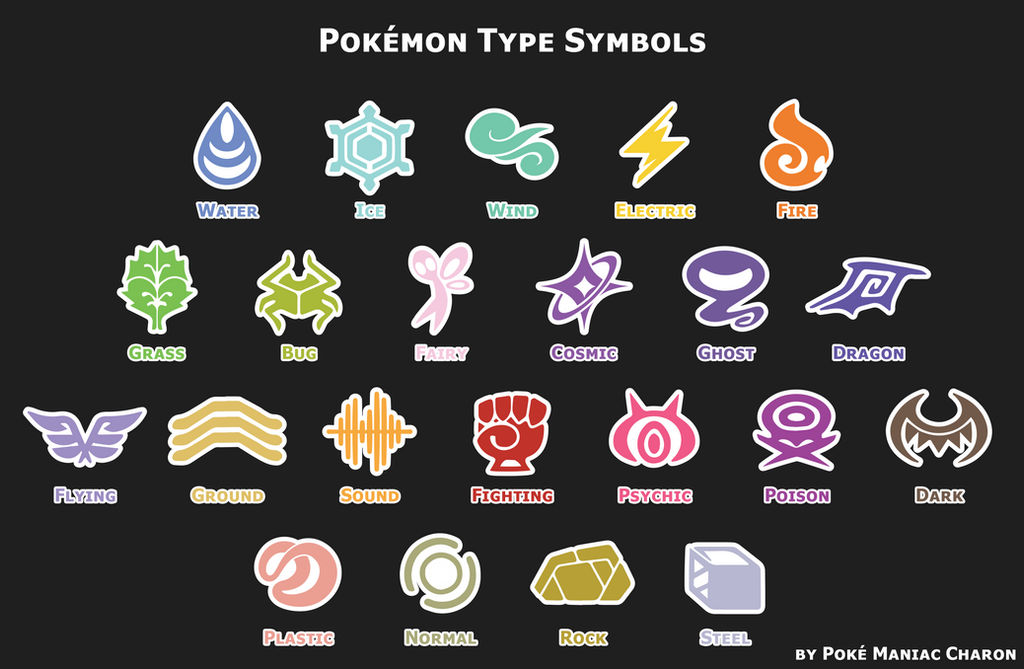
As the game evolves, so does the understanding of type interactions. The removal of type immunities and the introduction of tiered resistances have reshaped battle strategies, making knowledge of the Pokémon Go type chart a critical component of any trainer’s arsenal.
Whether you’re strategizing to conquer the latest Special Research quest or aiming to encounter the elusive Galarian Legendary birds, a firm grasp of Pokémon types will guide you to victory. Let’s delve into the world of Normal and Special Pokémon types, and uncover the secrets to becoming a Pokémon Go master.
Normal Pokemon Types
Grass
Among the Normal Pokémon types, Grass-type Pokémon flourish with their life-giving essence, often associated with healing and restorative abilities. These verdant creatures excel against Ground, Rock, and Water types, leveraging their natural affinity to outmaneuver these opponents in battle. However, trainers should be cautious, as Grass types are vulnerable to Flying, Poison, Bug, Fire, and Ice attacks, which can quickly turn the tide of a fight.
Their resilience is notable against Ground, Water, Grass, and Electric moves, allowing them to resist and endure where others might falter. A strategic deployment of Grass-type Pokémon can be a game-changer, especially when facing adversaries weak to their nurturing yet formidable power.
It’s important to note that in Pokémon Go, the effectiveness of Grass-type moves has been slightly adjusted compared to the main series games. While they still hold an advantage over the same types, the multipliers for effective or resisted attacks differ, as outlined in the type effectiveness chart. This nuanced change emphasizes the importance of understanding the specific mechanics of Pokémon Go to optimize Grass-type Pokémon in your lineup. Whether you’re battling in the Go Battle League or exploring the wild, a well-informed strategy that includes Grass types can lead to a lush victory.
Fire
Fire-type Pokémon are known for their fierce and blazing presence on the battlefield, often symbolizing strength and raw power. These incendiary creatures hold a commanding advantage over Bug, Steel, Grass, and Ice types, igniting their way to dominance with scorching moves. However, trainers must be wary of Fire types’ susceptibility to Rock, Water, and Ground attacks, which can extinguish their fiery spirit.
Despite these weaknesses, Fire types boast resistances to several other types, including Bug, Steel, Fire, and Grass, allowing them to withstand attacks that would otherwise be damaging. The strategic use of Fire-type Pokémon can bring a spark of victory to any battle, especially when facing opponents vulnerable to their intense heat.
Adapting to the unique environment of Pokémon Go, Fire-type effectiveness has been slightly modified from the main series, with a particular emphasis on the multipliers for super effective and not very effective moves. This adaptation requires trainers to reevaluate their approach when utilizing Fire types, as detailed in the Pokémon Go type chart. Mastery of these nuances is essential for any trainer looking to harness the power of Fire-type Pokémon, ensuring that their flames burn bright in the ever-evolving challenges of Pokémon Go’s competitive landscape.
Water
Water-type Pokémon are as versatile and dynamic as the element they represent, playing a pivotal role in the ecosystem of Pokémon types. These aquatic allies have the upper hand against Ground, Rock, and Fire types, making them a popular choice for trainers seeking to douse the opposition’s strategy.
Caution is advised, though, as Water types are not without their Achilles’ heel; they are weak against Grass and Electric moves, which can lead to a swift defeat if not carefully managed. Nonetheless, their resistance to Steel, Fire, Water, and Ice attacks provides a sturdy defense, allowing them to navigate through battles with resilience. Integrating Water-type Pokémon into your team can be a tide-turning decision, capable of washing away the competition with strategic play.
In the realm of Pokémon Go, the effectiveness of Water-type moves has been fine-tuned, deviating slightly from their traditional counterparts in the core Pokémon games. This includes the absence of immunities and adjusted damage multipliers, which can affect battle outcomes in significant ways. Trainers must stay abreast of these changes, as outlined in the Pokémon Go type effectiveness chart, to ensure their Water-type Pokémon can make the biggest splash in the game’s unique battle system.
Electric
Electric-type Pokémon spark excitement with their high-voltage capabilities, often associated with speed and energy. These electrifying combatants have a distinct advantage over Flying and Water types, zapping them with powerful shocks that can turn the tide of battle.
Trainers should be cautious, however, as Electric types find themselves at a disadvantage against Ground-type Pokémon, which are immune to electrical attacks and can ground their high-flying ambitions. Despite this, Electric types are resistant to fellow Electric-type moves, showcasing their ability to resist the very energy they wield so effectively.
By incorporating Electric-type Pokémon into your team, you can shock opponents with a jolt of strategic prowess and lightning-fast assaults.
When it comes to Pokémon Go, the mechanics of Electric-type effectiveness have been slightly altered from the main series games, with no immunities and a different set of multipliers for damage calculations.
This means that Electric types no longer have the same level of dominance over certain matchups, requiring trainers to adapt their strategies accordingly. Knowledge of these specific changes, as detailed in the Pokémon Go type chart, is crucial for any trainer looking to electrify the competition and succeed in Pokémon Go’s distinctive battle environment.
Rock
Rock-type Pokémon stand firm as the embodiment of endurance and strength within the Pokémon universe. These sturdy creatures boast an impressive offense against Flying, Bug, Fire, and Ice types, allowing them to crush adversaries with the weight of their attacks.
However, Rock types are not without their vulnerabilities; they are susceptible to Fighting, Ground, Steel, Water, and Grass moves, which can erode their defenses and leave them crumbling in defeat. Despite these weaknesses, their natural resilience grants them resistance to Normal, Flying, Poison, and Fire attacks, providing a solid foundation for any battle strategy.
Adding Rock-type Pokémon to your lineup can provide a formidable barrier against many common threats, reinforcing your team’s defensive capabilities.
Within the context of Pokémon Go, Rock-type effectiveness is subject to the game’s unique mechanics, which include the absence of immunities and adjusted damage multipliers. This adaptation from the core series means that Rock types may not perform exactly as veterans might expect, necessitating a fresh approach to battle tactics.
Trainers must familiarize themselves with the nuances of the Pokémon Go type effectiveness chart to maximize their Rock-type Pokémon’s potential and ensure that their strategies are as solid as the Pokémon they choose to deploy.
Ground
Ground-type Pokémon are the quintessential brawlers of the terrain, wielding the very earth beneath them to gain the upper hand in combat. Renowned for their ability to launch devastating attacks against Poison, Rock, Steel, Fire, and Electric types, Ground types are a force to be reckoned with. Their offensive prowess is balanced by their weaknesses to Water, Grass, and Ice moves, which can exploit their connection to the land and lead to their downfall.
Nonetheless, Ground types are innately resistant to Poison and Rock moves, fortifying their position as a robust choice for any strategic team composition. Integrating Ground-type Pokémon into your battle lineup can pave the way to victory with their powerful earth-shattering techniques.
In Pokémon Go, the dynamics of Ground-type effectiveness have been adjusted, reflecting the game’s unique battle system that modifies the traditional immunity concept. Ground types, which would typically be immune to Electric attacks, now experience a tiered resistance, taking significantly reduced damage instead.
This change requires trainers to reassess their strategies and adapt to the new damage multipliers outlined in the Pokémon Go type chart. Mastery of these alterations is essential for any trainer aiming to leverage the formidable power of Ground-type Pokémon in the augmented reality world of Pokémon Go.
Psychic
Psychic-type Pokémon are revered for their exceptional mental prowess, often turning the tide of battle with their mind-bending abilities. They excel in combat by exploiting the weaknesses of Fighting and Poison types, using their superior intellect to outmaneuver and overpower these adversaries.
However, Psychic types are not without their own Achilles’ heel; they are notably weak against Bug, Ghost, and Dark moves, which can penetrate their mental defenses and cause significant damage. Despite these susceptibilities, Psychic types are resistant to Fighting and Psychic moves, showcasing their mental fortitude and making them valuable assets in any strategic encounter.
The intricacies of Psychic-type effectiveness in Pokémon Go diverge slightly from the main series games, with immunities being transformed into another layer of resistance. For instance, Psychic types in Pokémon Go take reduced damage from what would normally be considered immune interactions, such as from Fighting and Psychic moves. This adaptation emphasizes the importance of understanding the specific mechanics of the Pokémon Go type effectiveness chart for trainers who wish to harness the full potential of their Psychic-type Pokémon in this mobile gaming experience.
Normal
Normal-type Pokémon stand as the versatile all-rounders in the Pokémon universe, often characterized by a diverse move pool and a lack of strong elemental attributes. While they may not boast the same offensive capabilities as other types, their strength lies in their adaptability and the ability to learn a variety of moves.
In battle, Normal types have a notable resistance to Ghost moves, rendering them ineffective, and this can be a strategic advantage in certain matchups. However, they are vulnerable to Fighting-type attacks, which can pose a significant threat to their otherwise balanced defense.
In the realm of Pokémon Go, Normal types maintain their unique position with slight modifications to their type interactions. Unlike in the main series games, there are no complete immunities, but Normal types still benefit from a heightened resistance to Ghost moves.
This nuanced approach to type effectiveness in Pokémon Go means that trainers need to be well-versed in the game’s specific type chart to make the most of their Normal-type Pokémon. Whether used as reliable team members or as strategic counters, understanding the strengths and weaknesses of Normal types is crucial for any aspiring Pokémon Go master.
Fighting
Fighting-type Pokémon are the brawlers of the Pokémon world, known for their physical prowess and a combat style that’s as straightforward as it is effective. They pack a punch against Normal, Rock, Steel, Ice, and Dark types, making them formidable opponents for a significant portion of the Pokémon roster. However, their strength is balanced by clear vulnerabilities;
Fighting types struggle against Flying, Poison, Psychic, Bug, Ghost, and Fairy moves, which can exploit their weaknesses and take them down. Despite these challenges, Fighting types are resistant to Rock, Bug, and Dark moves, allowing them to stand their ground in battles where they can leverage their strengths.
When it comes to Pokémon Go, the dynamics of Fighting-type effectiveness have subtle differences from the main series. There are no outright immunities, but Fighting types exhibit a strong resistance to what would typically be immune interactions.
For example, they take significantly less damage from Ghost moves, with the damage reduced to roughly a third of what it would be otherwise. This adjustment in type effectiveness is a key factor for trainers to consider, and staying informed with the Pokémon Go type chart is essential for those looking to optimize their Fighting-type Pokémon in battle.
Ice
Ice-type Pokémon are the embodiment of wintry might, wielding the power to freeze their adversaries with chilling moves. They excel against Flying, Ground, Grass, and Dragon types, making them valuable assets in battles where they can exploit these weaknesses.
However, Ice types must tread carefully, as they are weak against Steel, Fire, Water, and other Ice moves, which can leave them vulnerable in combat. Their natural resistance to Ice allows them to endure in frosty face-offs, but trainers must be mindful of their significant susceptibilities to Fighting, Rock, Steel, and Fire attacks, which can quickly melt their defenses.
In Pokémon Go, the effectiveness of Ice types is nuanced, with no complete immunities but adjusted resistances that trainers must account for. The game’s mechanics mean that Ice types receive less damage from types they would normally be immune to, such as Electric, due to the absence of traditional immunities found in the main series games.
This unique aspect of Pokémon Go’s type interactions requires trainers to adapt their strategies accordingly, making a thorough understanding of the type chart indispensable for those looking to leverage the frosty force of Ice-type Pokémon in their quest for victory.
Ghost
Ghost-type Pokémon are enigmatic creatures that haunt the battlefield with their spectral abilities. They are particularly effective against other Ghost types and Psychic Pokémon, striking fear into the hearts of those who dare challenge them.
Despite their ethereal nature, Ghost types are not without their own fears; they are weak against Dark types and other Ghosts, revealing that even shadows can be scared. However, their resistance to Normal and Fighting moves gives them a unique advantage, as they can slip through such physical attacks with eerie ease.
The mechanics of Pokémon Go introduce a twist to the traditional Ghost-type dynamics. While in the main series games Ghost types are immune to Normal and Fighting moves, in Pokémon Go, these immunities are transformed into a heightened form of resistance, with Ghost types taking approximately one-third of the damage from these types.
This modification in type effectiveness is a crucial consideration for trainers, who must stay up-to-date with the latest Pokémon Go type effectiveness changes to ensure their Ghost-type Pokémon can haunt the competition effectively.
Dragon
Dragon-type Pokémon are revered for their legendary status and formidable strength in the Pokémon universe. These majestic creatures boast dominance over Dragon types, making them fierce competitors in battles of draconic might.
However, their power is not without limits; Dragon types are vulnerable to Ice, Dragon, and Fairy moves, which can penetrate their otherwise stalwart defenses. Trainers must wield this knowledge with caution, as the rarity and power of Dragon-type Pokémon often come with the expectation of strategic mastery in matchups.
In the realm of Pokémon Go, Dragon types maintain their impressive offensive capabilities, but the game’s unique mechanics slightly alter their defensive attributes. Unlike the main series, where certain types are completely immune to others, Pokémon Go only offers a tiered resistance system.
This means that Dragon types, while still resistant to Fire, Water, Grass, and Electric moves, do not enjoy the full immunity they would traditionally have against these types. Aspiring Dragon-type masters should familiarize themselves with the intricacies of the Pokémon Go type chart to harness the true potential of these awe-inspiring creatures.
Dark
Dark-type Pokémon, known for their cunning and resilience, thrive in the shadows of the Pokémon world. These nocturnal warriors excel in battles against Ghost and Psychic types, exploiting the vulnerabilities of these mystical adversaries.
However, Dark types must beware of Fighting, Bug, and Fairy-type moves, which can pierce through their shrouded defenses. Their inherent resistance to Ghost and Psychic moves makes them a strategic choice for trainers looking to counter these common threats.
When it comes to Pokémon Go, Dark types continue to play a pivotal role in the strategic landscape, with adjustments to their resistances and weaknesses as compared to the main series games. The absence of total immunities in Pokémon Go means that Dark types receive reduced damage from types they would traditionally be immune to, such as Psychic.
This nuanced approach to type effectiveness requires trainers to stay vigilant and adapt their strategies accordingly, ensuring their Dark-type Pokémon can leverage their strengths while mitigating their weaknesses. For an in-depth understanding of these changes, trainers should consult the updated Pokémon Go type effectiveness chart.
Flying
Flying-type Pokémon soar above the competition with their agility and aerial prowess. These avian and winged creatures are particularly effective against Fighting, Bug, and Grass types, making them valuable assets in overcoming these opponents.
However, their dominance in the skies is challenged by Rock, Electric, and Ice-type moves, which can ground them with their super effective damage. Trainers should capitalize on the Flying type’s resistances to Fighting, Ground, Bug, and Grass moves to maintain an edge in battle scenarios.
In the dynamic environment of Pokémon Go, Flying types retain their role as formidable contenders, albeit with a twist in their defensive capabilities. The game’s unique resistance system means that while Flying types are not completely immune to Ground moves, they take significantly less damage, akin to a third of what would be expected.
This adaptation in Pokémon Go’s mechanics underscores the importance of understanding the nuanced type interactions to effectively utilize Flying-type Pokémon. For a comprehensive breakdown of these interactions, trainers are encouraged to explore the Pokémon Go type chart.
Bug
Bug-type Pokémon, often underestimated in the Pokémon universe, hold their own with unique advantages and distinct weaknesses. These industrious creatures excel when pitted against Grass, Psychic, and Dark types, exploiting their natural vulnerabilities.
However, Bug types must navigate battles carefully, as they are weak against Flying, Rock, and Fire-type moves, which can quickly exploit their frailties. Despite these challenges, their effectiveness against some of the more powerful types in the game makes them a clever addition to any trainer’s lineup.
Within the realm of Pokémon Go, Bug types have a slightly altered role due to the game’s modified type effectiveness system. While they maintain their strengths and weaknesses, the lack of total immunities alters their defensive strategy. For instance, Bug types no longer have an immunity but instead possess a heightened resistance to certain types, reducing incoming damage to a fraction.
Trainers looking to master the use of Bug-type Pokémon should familiarize themselves with the specific multipliers and resistances detailed in the Pokémon Go type effectiveness chart, ensuring they can navigate battles with tactical precision.
Poison
Poison-type Pokémon are known for their toxic abilities and their strategic importance in battles. These venomous creatures are particularly strong against Grass and Fairy types, allowing them to take down some of the more enchanting and resilient opponents with ease.
However, they face difficulties when up against Poison, Ground, Rock, Ghost, and Steel types, which can resist their poisonous assaults. Trainers should leverage Poison types’ offensive capabilities while being mindful of their limitations to maximize their effectiveness in combat.
In Pokémon Go, the role of Poison types is nuanced by the game’s distinctive approach to type effectiveness. While they retain their offensive strengths, the absence of complete immunities in the game means that Poison types have to rely on their substantial resistances to Fighting, Poison, Grass, and Fairy moves to endure in battle.
This change emphasizes the need for trainers to adapt their strategies and stay informed about the latest type advantages, as outlined in the type effectiveness chart for Pokémon Go. Understanding these details is crucial for anyone aiming to utilize Poison-type Pokémon to their full potential.
Special Pokemon Types
Steel
Steel-type Pokémon stand out as formidable contenders in the Pokémon landscape, boasting an impressive array of resistances and strategic offensive capabilities. Renowned for their strength against Rock, Ice, and Fairy types, Steel Pokémon can deliver powerful blows to these vulnerable opponents.
Despite their might, they must be wary of their weaknesses to Fighting, Ground, and Fire moves, which can penetrate their otherwise stalwart defenses. Trainers who employ Steel types effectively can capitalize on their defensive prowess while striking decisively where it counts.
The intricacies of Steel-type effectiveness in Pokémon Go are particularly noteworthy, as the game’s unique mechanics slightly alter their traditional role. While Steel types continue to exhibit a strong defense against numerous types, the game’s modified resistance system means that they are not completely immune to any type, but rather have enhanced resistances that significantly reduce damage from certain attacks.
Trainers should consult the Pokémon Go type chart to fully grasp the nuances of Steel-type matchups and to devise strategies that leverage their robust defensive qualities in the ever-evolving world of Pokémon battles.
Fairy
Delving into the realm of Fairy-type Pokémon, we encounter a group that exudes a magical charm and possesses a unique set of strengths and vulnerabilities. These mystical creatures are particularly effective against Fighting, Dragon, and Dark types, making them invaluable assets in battles against some of the most formidable adversaries.
However, their enchanting powers are not without their counters, as they find themselves at a disadvantage when facing Poison, Steel, and Fire types. Trainers who harness the power of Fairy types can disrupt the strategies of their opponents with their unexpected offensive capabilities.
In the context of Pokémon Go, Fairy types maintain their special status with slight adjustments to their effectiveness, as detailed in the game’s type chart. The absence of complete immunities in Pokémon Go means that Fairy types, while still resistant, are not entirely impervious to the types they would traditionally be immune to. Instead, they benefit from a heightened tier of resistance, taking significantly less damage from certain attacks.
This adaptation requires trainers to stay abreast of the latest game mechanics and to strategically deploy Fairy-type Pokémon, ensuring their enchanting presence remains a potent force on the battlefield.
Legendary
Legendary Pokémon are among the most sought-after and powerful creatures in the Pokémon universe, often possessing a majestic aura and extraordinary battle capabilities. These rare and often unique Pokémon frequently have higher base stats than regular types, providing trainers with a significant advantage in combat.
Their rarity and strength make them a top choice for those looking to dominate in the Go Battle League and Shadow Raids. As players engage in events like the Party Up! and seek encounters with Legendary Pokémon such as Galarian Articuno, Galarian Zapdos, and Galarian Moltres, understanding their type interactions is crucial for success.
While Legendary Pokémon do not have a specific type that defines them all, they often exhibit a combination of types that contribute to their legendary status. For instance, many Legendary Pokémon may be dual-typed, combining the strengths and weaknesses of two different Pokémon types, which can lead to complex and strategic battles in Pokémon Go.
Trainers must be well-versed in the intricacies of type effectiveness, as outlined in the Pokémon Go type chart, to maximize the potential of their Legendary Pokémon and to navigate the challenges posed by their opponents’ strategies effectively.
Mythical
Mythical Pokémon stand in a category of their own, shrouded in legend and often accessible only through special events or distributions. These elusive creatures are akin to Legendary Pokémon in their rarity and power but are typically offered as part of unique story-driven gameplay experiences. Mythical Pokémon, such as Mew, Celebi, and Jirachi, captivate trainers with their exclusive moves and exceptional abilities that can turn the tide of any battle.
Their presence in Pokémon Go is a testament to the evolving narrative and the ongoing excitement that keeps trainers worldwide engaged in the hunt for these extraordinary beings.
Understanding the role of Mythical Pokémon in combat requires a grasp of their unique type advantages and resistances, which can be quite distinct from other Pokémon types. As with Legendary Pokémon, Mythical types often boast a combination of attributes that necessitate strategic planning and a deep knowledge of type matchups.
Trainers aiming to incorporate Mythical Pokémon into their rosters must consider the latest updates to type effectiveness in Pokémon Go, as detailed by the type effectiveness chart. With the right approach, these rare and powerful Pokémon can provide an edge in the most competitive aspects of the game, from the Go Battle League to exclusive event challenges.
Conclusion
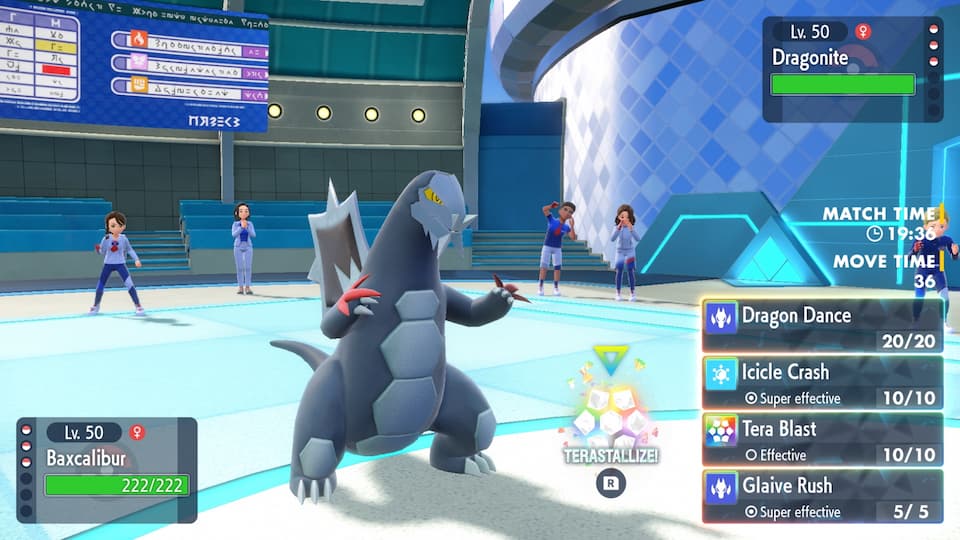
In the dynamic world of Pokémon Go, understanding the intricacies of Pokémon types is crucial for any trainer aspiring to excel. The game’s unique take on type effectiveness, with its adjusted multipliers and absence of immunities, adds a layer of strategic depth that challenges players to continuously adapt their tactics.
By leveraging the insights provided by a detailed type effectiveness chart, trainers can craft teams that capitalize on the strengths of various Pokémon types while mitigating their vulnerabilities.
Whether engaging in the Go Battle League, participating in special events, or simply exploring the world to capture rare Pokémon, a solid grasp of type matchups is a powerful asset in the quest to become a Pokémon Master.
As Pokémon Go continues to evolve, with new features like Party Play and the introduction of Galarian Legendary Birds, staying informed about the latest type effectiveness changes is more important than ever.
Trainers who master the nuances of Pokémon types and adapt to the game’s unique combat mechanics will find themselves at an advantage, ready to take on any challenge that comes their way. Remember, the key to victory often lies in the knowledge of your Pokémon’s types and how they interact with the diverse array of opponents you’ll encounter on your journey.
Sources:
FAQ
-
What are the 11 types of Pokémon?
Pokémon Types in the TCG include Fire, Fighting, Dragon, Lightning, Grass, Water, Fairy, Psychic, Darkness, Metal, and Colorless.
-
What are Pokémon weaknesses?
Pokemon Type Super Effective Against Weak To Dark Psychic Ghost Fighting Bug Fairy Bug Grass Psychic Dark Fire Flying Rock Poison Grass Fairy Ground Psychic Steel Ice Rock Fairy Fire Fighting Ground
-
How many type is there in Pokémon?
With the release of Scarlet & Violet in late 2022, the roster of Pokémon has finally surpassed 1,000 species, nestling at 1021 Pokémon and counting. There were 15 different types at the start, but Dark, Steel, and Fairy have since joined, giving a total of 18 types.
-
How do I know what type a Pokémon is?
A Pokemon’s type is usually determined by their elemental abilities, such as Fire and Water types, or their physical appearances, such as Bug and Flying types.
Originally posted 2023-11-12 16:09:56.







